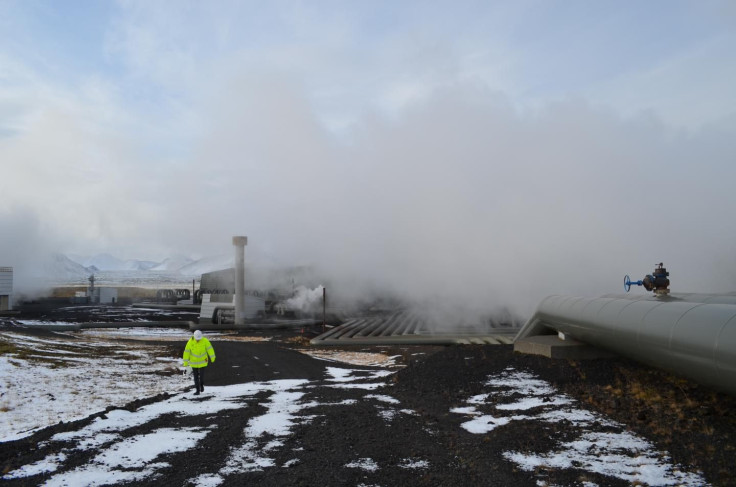Icelandic Experiment Reports A Climate Change Breakthrough, Turns Carbon Dioxide To Stone

Earlier this year, a monitoring station in Tasmania recorded a major milestone — the concentration of atmospheric carbon dioxide had crossed the symbolic “red line” of 400 parts per million. Similar readings by several other monitoring stations around the world have, in recent years, triggered fears that atmospheric carbon dioxide levels may now never dip below 400 ppm — the highest level in 650,000 years.
A new experiment, carried out by researchers at the CarbFix Project in Iceland, offers a ray of hope. These scientists have found a quick, albeit expensive, way to get rid of the atmospheric carbon dioxide — turning it into stone.
The experiment, carried out as part of the increased emphasis to find efficient carbon capture and sequestration (CCS) techniques, successfully converted gaseous carbon dioxide to stable carbonate minerals such as calcite and magnesite. This was done by mixing carbon dioxide — the waste emitted by Iceland’s Hellisheidi geothermal power plant — with water and then injecting it 500 meters below the surface into basaltic rocks, which are formed when lava cools. The slightly acidic mixture dissolved the rocks, freeing up calcium and magnesium ions, which reacted with carbon dioxide.
More importantly, this was achieved in a matter of months rather than millions of years it normally takes for the gas to be removed from atmosphere through this process.
“This study demonstrates for the first time the permanent disposal of CO2 as environmentally benign carbonate minerals in basaltic rocks. This result contrasts with the common view that the immobilization of CO2 as carbonate minerals within geologic reservoirs takes several hundreds to thousands of years,” the abstract of the study, published Friday in the journal Science, said. “Our results, therefore, demonstrate that the safe long-term storage of anthropogenic CO2 emissions through mineralization can be far faster than previously postulated.”
However, there are still several key issues that need to be worked on before the technology can be scaled up.
For one, basalt — a rock that is abundant in Iceland — is not found everywhere. Secondly, the experiment requires a dauntingly huge amount of water — 25 tons for every ton of carbon dioxide — for it to be truly viable on a larger scale.
“We need to do more field-scale tests, like this one in Iceland, to better understand the types of processes that are ongoing and how fast they work,” Christopher Rochelle, a geochemist at the British Geological Survey, who was not involved in the experiment, told the BBC. “Here, they injected into reactive rocks and the minerals precipitated relatively quickly and are then unable to migrate anywhere. That's great, but the rocks under Iceland are different to those under the North Sea, for example. So the approach that is taken is going to have to vary depending on where you are.”
© Copyright IBTimes 2024. All rights reserved.






















